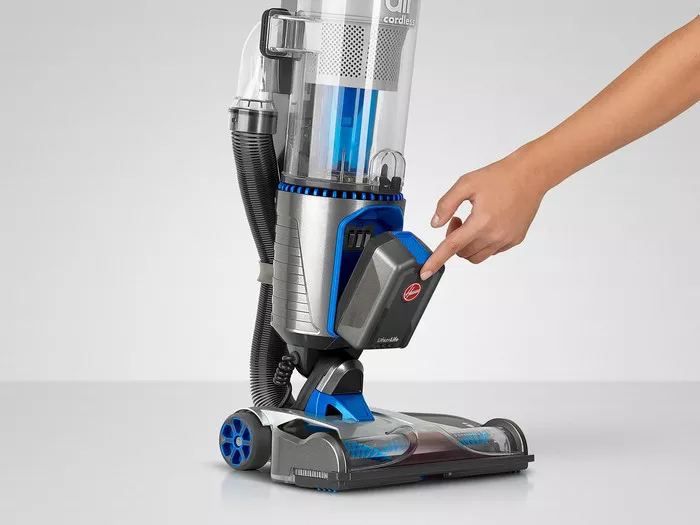Vacuum cleaners are indispensable tools for maintaining cleanliness in our homes and workplaces. They effectively remove dust, dirt, and debris from floors and surfaces. However, many people wonder about the effects of leaving dust in a vacuum cleaner. Is it harmful to keep dust stored in the vacuum for extended periods? This article explores the implications of leaving dust in a vacuum, discussing potential problems and offering solutions to ensure optimal performance and hygiene.
Understanding Dust Accumulation in Vacuums
How Vacuums Collect Dust
When you use a vacuum cleaner, it draws in air through its suction system, which contains dust, dirt, and other particles. These particles are captured in the vacuum’s dust bag or canister. Over time, the dust accumulates and fills the container, which needs to be emptied regularly to maintain the vacuum’s efficiency.
Types of Dust Collected
The dust collected by a vacuum can vary in composition. It may include household dust, pet dander, pollen, dirt from shoes, and even small particles from cleaning products. Each type of dust has its own characteristics and potential implications for health and vacuum performance.
Potential Problems of Leaving Dust in a Vacuum
Reduced Vacuum Performance
One significant issue with leaving dust in a vacuum is the potential reduction in performance. As the dust bag or canister fills up, the vacuum’s suction power can decrease. This happens because the air flow is obstructed by the accumulating dust, making it harder for the vacuum to pick up additional debris. Reduced performance means that the vacuum cleaner becomes less effective at cleaning, requiring more effort and time to achieve the same results.
Increased Wear and Tear
Leaving dust in the vacuum can also lead to increased wear and tear on the machine. The dust and debris can cause the vacuum’s internal components to work harder than they should, leading to quicker wear and potential malfunctions. For instance, clogged filters or dust buildup in the motor can strain the vacuum, leading to more frequent repairs and a shorter overall lifespan of the appliance.
Odor and Bacteria Growth
Another concern is the potential for unpleasant odors and bacterial growth. Dust and debris, especially organic matter such as pet dander or food crumbs, can decompose and emit foul smells if left in the vacuum for too long. Additionally, damp or moist environments inside the vacuum can foster bacterial and mold growth, which can spread unpleasant odors and even pose health risks.
Impact on Air Quality
The quality of the air in your home can be affected by the dust left in the vacuum. If the vacuum’s filter is not properly maintained or if the dust is allowed to escape back into the air, it can contribute to poor indoor air quality. This can be especially problematic for individuals with allergies or respiratory conditions, as dust particles can exacerbate symptoms and trigger allergic reactions.
see also: Where Are Shark Vacuum Cleaners Manufactured?
Best Practices for Maintaining a Clean Vacuum
Regularly Empty the Dust Container
To avoid the problems associated with leaving dust in the vacuum, it is essential to empty the dust container regularly. For bagless vacuums, this means emptying the canister after each use or when it reaches the indicated fill line. For bagged vacuums, replace the bag when it is about two-thirds full to ensure optimal performance and to prevent overloading.
Clean Filters and Brushes
In addition to emptying the dust container, regularly clean the filters and brushes of your vacuum. Filters can become clogged with dust and debris, reducing suction power and air quality. Cleaning or replacing the filters as recommended by the manufacturer will help maintain the vacuum’s efficiency. Similarly, brushes should be checked for tangled hair or debris and cleaned to ensure effective cleaning performance.
Store the Vacuum Properly
Proper storage of the vacuum can also help maintain its performance. Store the vacuum in a dry area to prevent moisture buildup, which can contribute to bacterial growth and unpleasant odors. Ensure that the vacuum is stored in a place where it is protected from dust and dirt when not in use.
Perform Regular Maintenance
Regular maintenance is key to ensuring the longevity and effectiveness of your vacuum cleaner. Follow the manufacturer’s guidelines for maintenance and servicing. This may include checking belts, hoses, and other components for signs of wear and addressing any issues promptly.
Conclusion
Leaving dust in a vacuum cleaner is not advisable due to potential issues such as reduced performance, increased wear and tear, unpleasant odors, and compromised air quality. To keep your vacuum cleaner functioning optimally, it is important to empty the dust container regularly, clean filters and brushes, store the vacuum properly, and perform routine maintenance. By following these best practices, you can ensure that your vacuum cleaner remains effective and hygienic, providing you with clean and fresh environments for years to come.

